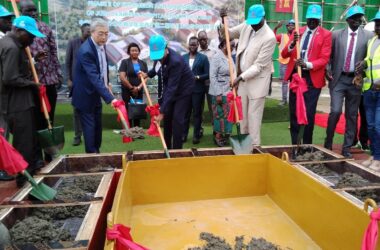Kei Emmanuel Duku
A new report released by the United Nations Office for the Coordination of Humanitarian Affairs (OCHA) in South Sudan has revealed the number of people affected by flood has risen from 710,000 to 735,000 an increase of 25,000 across the 38 counties and Abyei Administrative Area.
Currently, most of the areas in South Sudan are experiencing severe flooding resulting to the destruction of social infrastructures, farmlands, and shelter, and the outbreak of waterborne diseases.
As of Thursday, September 12th, 2024, the International Organization for Migration (IOM) has estimated that about 65,000 are believed to have been displaced by the floods where 41,000 and 10,375 affected populations are from Warrap and Jonglei States respectively.
The latest reports revealed that an additional two Payams out of the 13 Payams in Unity State have been affected by the floods compared to 9 out of the 13 Payam last week.
It is also estimated that more than 21,000 people are currently experiencing severe flooding in Unity with over 4,000 hectares of farmland already submerged in Water with the expected population likely to experience famine soon.
The flooding has affected road networks resulting in delayed delivery of essential medical supplies as humanitarian organizations have to rely on expensive means of transport such as water and air transport.
Since mid-August till date, the number of people displaced by the flood in Upper Nile State has doubled from 15,000 to 36,000 compared to last week’s reports.
The affected population is said to have already settled in New Fangak, Jonglei State according to a recent visit by the Floods Task Force to Tonga Town.
A rapid assessment conducted in Nasir County found that about 1,000 households have been affected by the flood across three different Payams whereas over 20,000 people have been affected by the flooding in Raja County of Western Bahr El Ghazal.
Currently, a joint Government-Partner visit has been planned to help the over 5,700 families (20,000 people) in Jur River County who have been affected by the flood since the onset of August that has left over 140 fedans submerged.
Meanwhile, in the Abyei Administrative area, the lack of drainage systems has been identified as a major setback, and already plans are underway by NGOs operating on the ground to support more than 10,000 affected populations in the area.
In areas of Bor, Pibor, and Malaka already United Nations agencies have started raising awareness to address the impact of flood on the social and economic life of the local populations with the support of the Peace Building Fund.
An estimated 16,200 individuals in New Fangak-Jonglei State have already received shelter and Non-Food Items while another 900 have been registered in Old Fangak and are set to benefit from Water, Sanitation, and Hygiene (WASH) services on top of the ten tents mobile health clinics that have been delivered already.
To reduce the impact of snakebites, the United Nations including other development partners supplied 500 anti-venom to communities of Koch County in Unity State.
While in Upper Nile State two batches of 30 metric tons of medical supplies mainly WASH, protection, Nutrition and Shelter have been dispatched from Malakal to Tonga for the flood-affected population in New Fangak and distribution started earlier over the week.
In Central Equatorial State, already 7,200 affected population in Juba County has benefited from a multi-purpose cash project implemented by The Red Cross. Similarly in Northern Bahr el Ghazal, the UN and its partners distributed food to 90,000 families as part of the lean season response, with cash assistance to follow in all five counties.
However, In the Eastern Equatorial State, Lafon County’s absence of anti-venom is causing fatalities resulting from frequent snakebites.
According to the report, most of the flood-affected areas remain inaccessible due to poor road connectivity while access to clean drinking water, dyke construction plans, and safe areas for positioning response machines remain a major setback.
To address the crisis, the Central Emergency Respond Fund has allocated $15 million, and the South Sudan Humanitarian Fund has provided an additional $5 million. These funds will support 700,000 flood-affected people in several counties.




